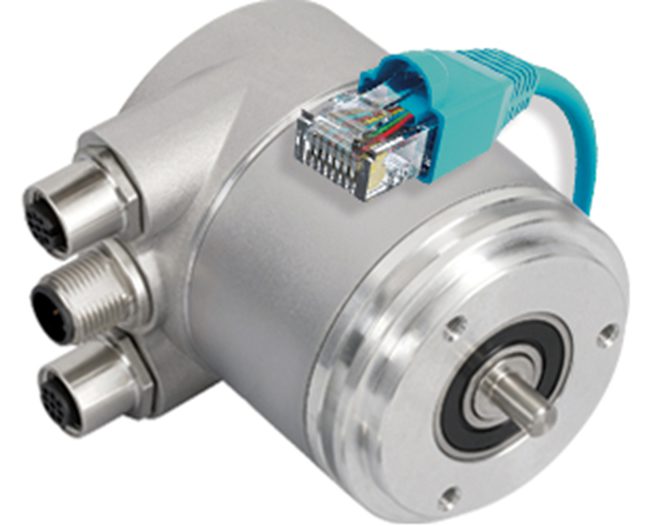Application Note: Ethernet Protocols for Industrial Automation Sensors
Industrial Ethernet protocols are playing a growing role in automation, as they offer a number of advantages over traditional fieldbus protocols such as CANopen and PROFIBUS. Industrial Ethernet protocols are based on standard Ethernet technology, which provides a number of benefits, including:
- High bandwidth: Industrial Ethernet protocols can support high bandwidth communication, which is essential for many demanding automation applications.
- Scalability: Industrial Ethernet networks can be scaled to support a large number of devices, making them ideal for complex automation systems.
- Flexibility: Industrial Ethernet networks can be configured in a variety of topologies, making them adaptable to different industrial environments.
- Interoperability: Industrial Ethernet protocols are often interoperable with each other, making it possible to connect devices from different vendors on the same network.
In addition, many industrial Ethernet protocols also offer features that are specifically designed for automation applications, such as:
- Real-time performance: Industrial Ethernet protocols can provide real-time performance, which is essential for applications such as motion control and process control.
- Determinism: Industrial Ethernet protocols can provide deterministic performance, meaning that data packets are delivered within a predictable amount of time. This is important for applications where timing is critical.
- Robustness: Industrial Ethernet protocols are designed to be robust to noise and interference, making them reliable for use in harsh industrial environments.
Protocol Specifics: EtherNet/IP, PROFINET and EtherCAT
EtherNet/IP, PROFINET, and EtherCAT are all industrial Ethernet protocols that are used to connect and control industrial devices. They are all based on the standard Ethernet protocol, but they each have their own unique features and benefits.
EtherNet/IP is a protocol developed by the Open DeviceNet Vendors Association (ODVA). It is a widely used protocol in the United States and is supported by a large number of vendors. EtherNet/IP is a versatile protocol that can be used for a variety of applications, including discrete I/O, process control, and motion control.
PROFINET is a protocol developed by the PROFIBUS & PROFINET International (PI) organization. It is a widely used protocol in Europe and is supported by a large number of vendors. PROFINET is a high-performance protocol that is well-suited for demanding applications such as motion control and real-time process control.
EtherCAT is a protocol developed by Beckhoff Automation. It is a high-performance protocol that is well-suited for demanding applications such as motion control and real-time process control. EtherCAT is known for its ultra-fast cycle time and deterministic performance.
Comparison of EtherNet/IP, PROFINET, and EtherCAT
The following table compares EtherNet/IP, PROFINET, and EtherCAT:

Applications of EtherNet/IP, PROFINET, and EtherCAT
EtherNet/IP, PROFINET, and EtherCAT can be used for a variety of applications, including:
- Discrete I/O
- Process control
- Motion control
- Robotics
- Machine vision
- Building automation


Rotary encoders (left) such as those from POSITAL are available with a variety of Ethernet based protocols. Linear sensors (right) from Opkon are available to integrate with EtherCAT control systems.
Conclusion
EtherNet/IP, PROFINET, and EtherCAT are all powerful industrial Ethernet protocols that can be used for a variety of applications. Rotary and linear sensors are just two types of sensors that are available with industrial ethernet communication. As the number of industrial ethernet installations continues to grow exponentially each year, the availability of Ethernet based sensors will become more important than ever.
"*" indicates required fields